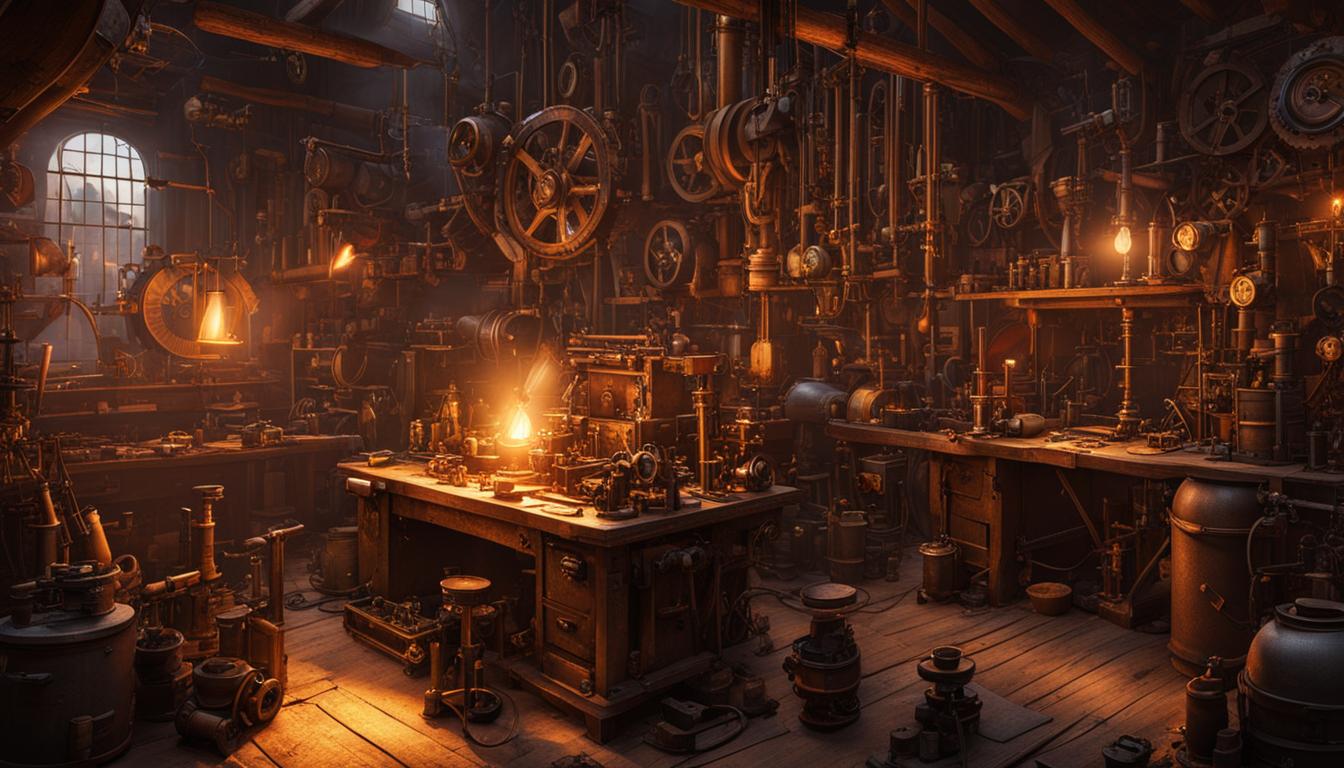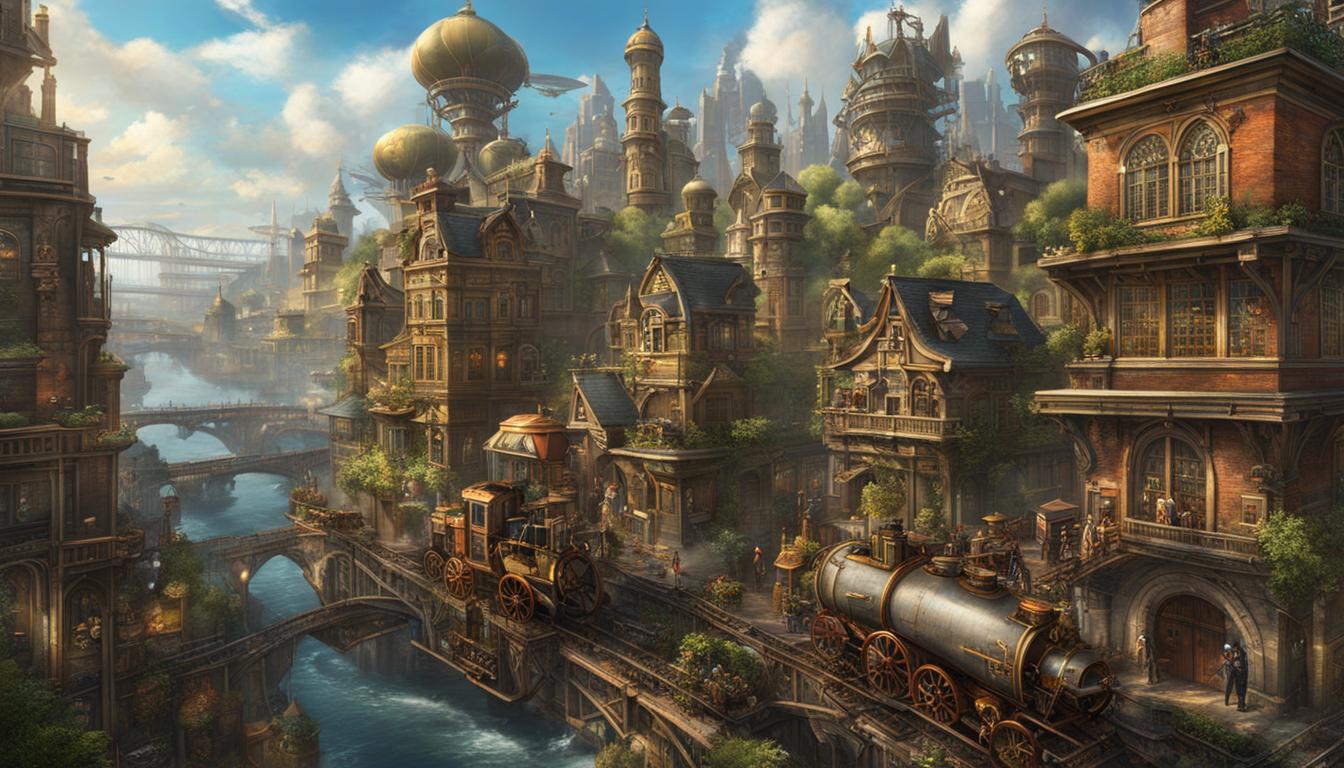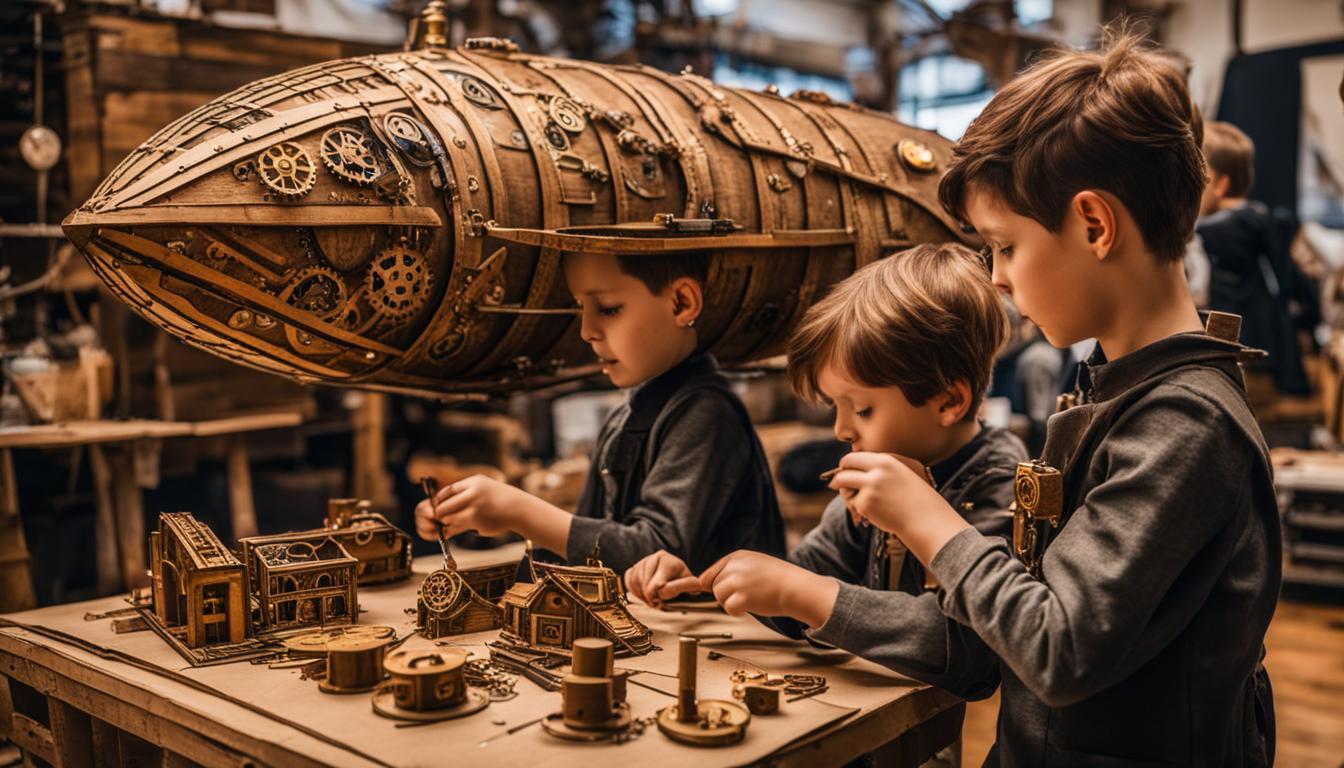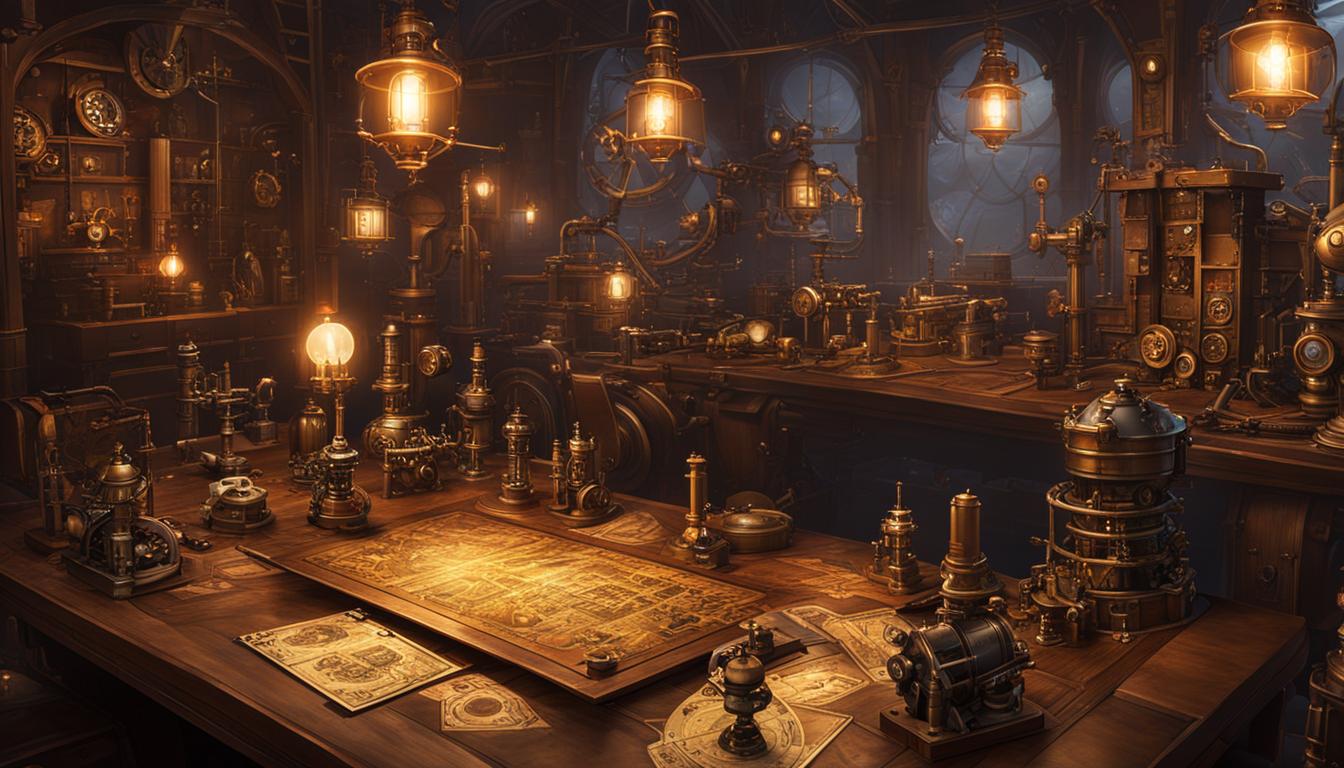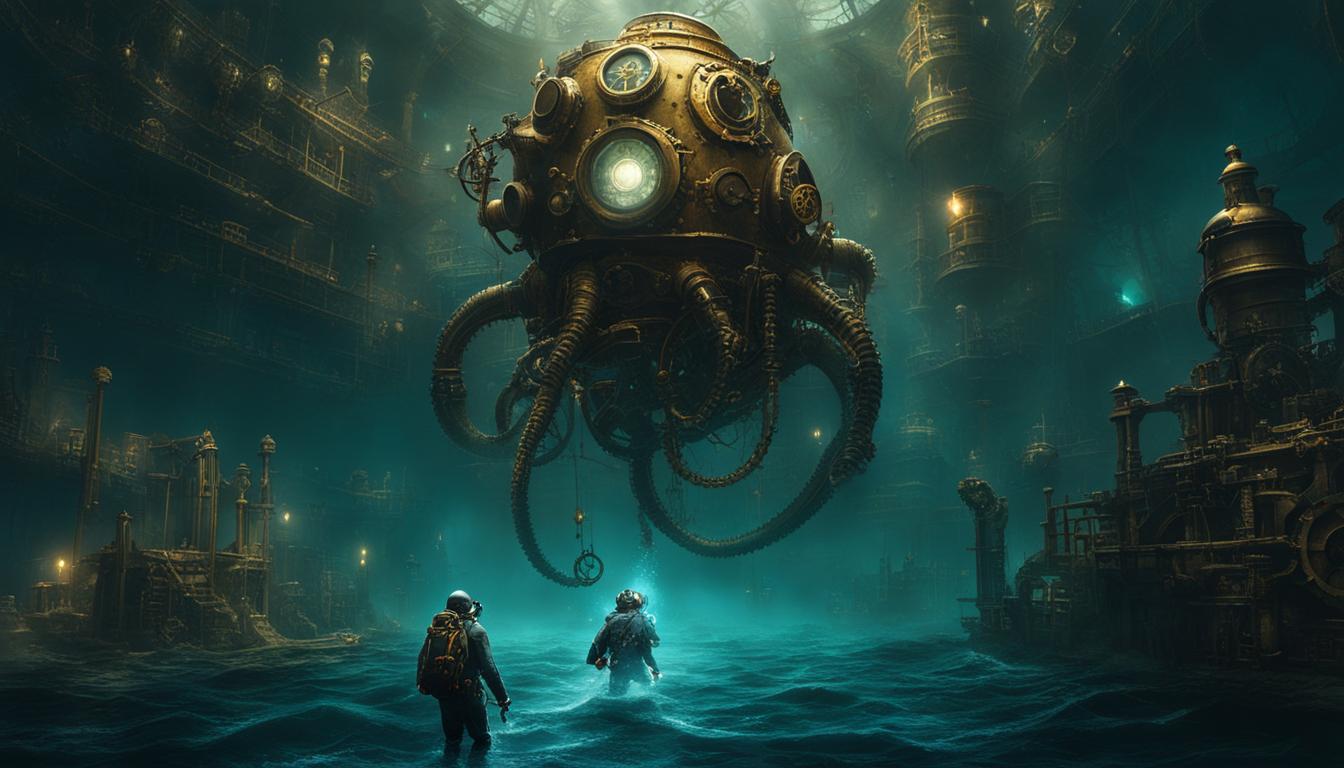Steampunk, renowned for its stunning aesthetics, often falls short when it comes to immersive world-building. But fear not, fellow enthusiasts! This article will delve into the secrets of creating detailed and captivating steampunk settings that go beyond mere visual appeal.
Step into a world where fantastical creatures roam and innovative technologies push the boundaries of imagination. Steampunk world-building is an art that requires elements beyond surface-level design. Prepare to be immersed in the rich tapestry of storytelling, societal exploration, and the wonders of advanced technology.
Key Takeaways:
- Immersive steampunk crafting goes beyond aesthetics
- Explore in-depth storytelling and societal themes
- Embrace the historical context of the Victorian era
- Master the art of rebellion, innovation, and social reform
- Create intricate and captivating steampunk environments
The Historical Context of Steampunk
Steampunk is a genre deeply influenced by the historical context of the Victorian era and the Industrial Revolution. These periods were marked by significant societal, technological, and cultural transformations that set the stage for the fantastical worlds of steampunk. To create immersive steampunk settings, enthusiasts need to acquire skills in understanding the social nuances, technological marvels, and societal struggles of the Victorian era.
By drawing inspiration from the history of this time, steampunk authors reimagine and repurpose the advancements of the Industrial Revolution, taking them to new heights in their fictional worlds. Steam-powered machinery, intricate clockwork mechanisms, and elaborate contraptions become the norm, offering a unique blend of historical reality and imaginative fiction.
To truly immerse themselves in the craft of steampunk world-building, enthusiasts must delve into the various aspects of Victorian society. They must familiarize themselves with the political and economic landscapes, the class system, and the cultural values of the time. By researching these historical elements, creators can develop a rich and detailed understanding of the era, allowing them to craft immersive and captivating steampunk environments that transport readers and viewers to a world that blends history and fantasy.
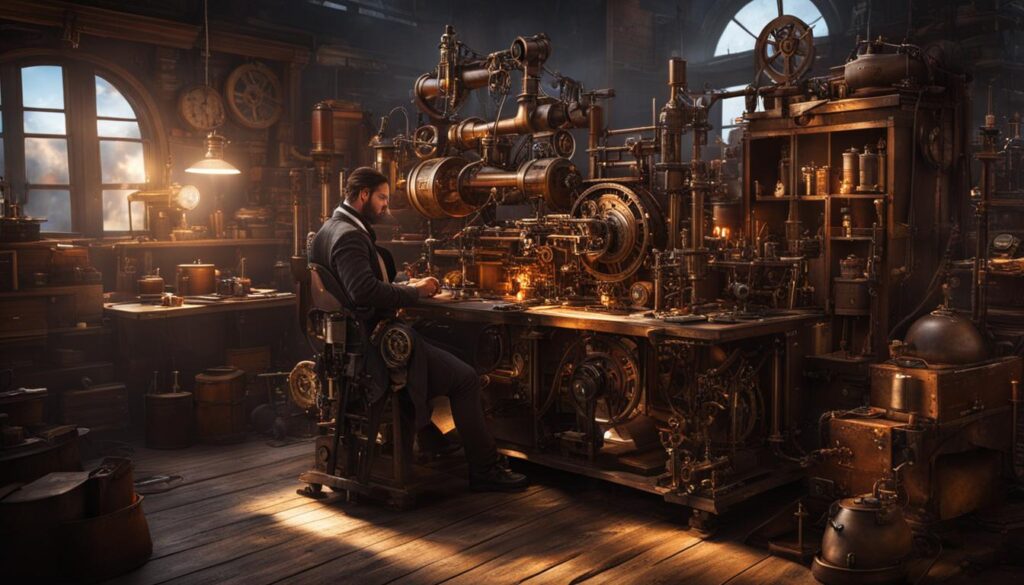
Skills for Immersive Steampunk Crafting
- Researching the Victorian era: Dive into books, articles, and historical resources to gain a comprehensive understanding of the time period. Explore topics such as fashion, architecture, technology, and societal structures.
- Embracing the Industrial Revolution: Study the advancements and innovations of the Industrial Revolution, from steam power to machinery and transportation. This knowledge will help you create believable and awe-inspiring steampunk technology.
- Understanding societal nuances: Familiarize yourself with the social hierarchies, class struggles, and cultural norms of the Victorian era. This will add depth to your storytelling and allow you to explore themes of inequality and social reform in your steampunk worlds.
- Blending history with imagination: Strive to strike a balance between historical accuracy and creative reinvention. Let the historical context inspire your storytelling, while also embracing the fantastical elements that make steampunk unique.
By honing these skills and incorporating historical elements into their world-building, steampunk enthusiasts can create immersive and detailed environments that transport audiences to a mesmerizing fusion of the past and the future.
| Skills for Immersive Steampunk Crafting |
|---|
| Researching the Victorian era |
| Embracing the Industrial Revolution |
| Understanding societal nuances |
| Blending history with imagination |
Essential Elements of Steampunk Worldbuilding
Steampunk world-building involves mastering the craft of creating intricate and immersive environments that transport readers and viewers to fantastical realms. To achieve this, there are several essential elements that should be considered:
Rebellion
In the world of steampunk, rebellion is a recurring theme that adds depth and complexity to the narrative. Characters often find themselves in situations where they must question or defy the status quo, challenging conventional norms and authority. This element of rebellion sparks intrigue and captivates the audience, making them invested in the story.
Innovation
One of the defining characteristics of steampunk is its focus on inventive gadgets and steam-powered technology. To create a detailed and immersive steampunk environment, emphasis should be placed on pushing the boundaries of science and imagination. By incorporating innovative elements, such as intricate machinery and imaginative contraptions, creators can transport their audience into a world of endless possibilities.
Social Reform
Steampunk storytelling often addresses themes of equality, justice, and societal issues. By exploring these aspects, creators can craft narratives that resonate with contemporary audiences. The inclusion of social reform not only adds depth to the storyline but also provides a platform for thought-provoking discussions on important topics. This element allows steampunk enthusiasts to not only create visually stunning environments but also convey meaningful messages.
By incorporating these essential elements of rebellion, innovation, and social reform, creators can master the craft of steampunk world-building. These techniques for creating detailed and immersive steampunk environments ensure that enthusiasts can captivate their audience and transport them to wondrous and thought-provoking realms.
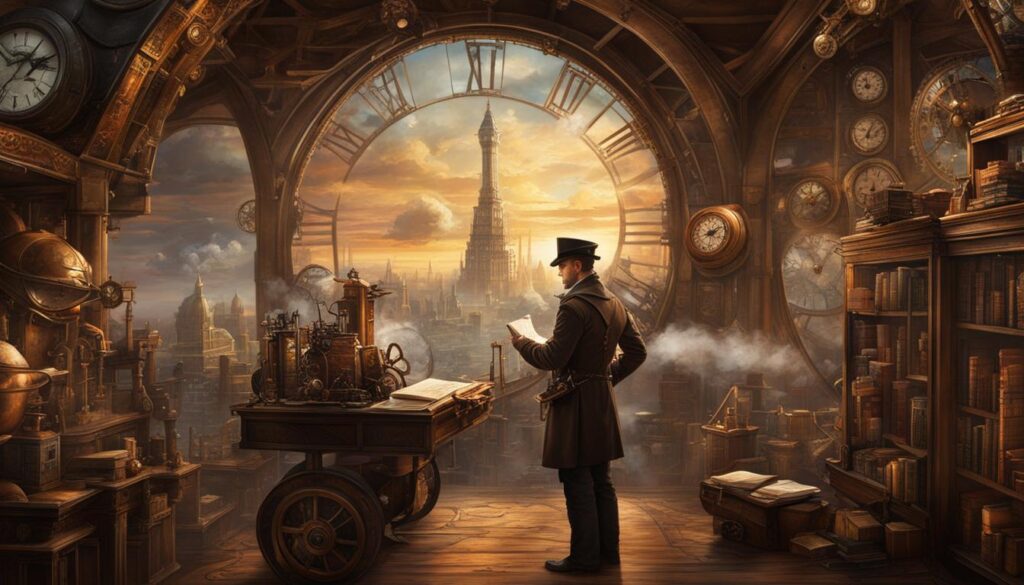
Conclusion
Crafting Immersive Steampunk Environments: Advanced Techniques and In-Depth Strategies
Steampunk crafting is an art that goes far beyond surface-level aesthetics. It requires a deep understanding of immersive world-building techniques to create detailed and captivating environments. By embracing rebellion, innovation, and social reform, creators can breathe life into their steampunk worlds, making them resonate with audiences.
Mastering the craft of steampunk world-building involves delving into the historical context of the Victorian era and the Industrial Revolution. By acquiring knowledge of the societal nuances, technological marvels, and struggles of that time, enthusiasts can infuse their worlds with authenticity and depth.
To take steampunk crafting to new heights, advanced techniques come into play. These include pushing the boundaries of imagination with inventive gadgets and steam-powered technology. By incorporating themes that address contemporary issues, creators can create thought-provoking stories that transport audiences into rich and imaginative worlds.
With in-depth strategies and advanced techniques, steampunk enthusiasts can unlock the true potential of their craft. By immersing themselves in the process of world-building, they have the power to transport both themselves and their audience to a realm where Victorian elegance meets fantastical adventures.
FAQ
Is steampunk world-building solely focused on aesthetics?
No, the most engaging steampunk media goes beyond surface-level design and delves into immersive world-building.
Which steampunk games fail to fully explore the fantastical elements?
Popular games like The Order 1886 are criticized for relying on Victorian aesthetics and neglecting the fantastical elements of steampunk.
Which franchises embrace the fantastical elements of steampunk?
Franchises like Frostpunk and Fallen London embrace fantastical creatures, interesting technology, and stories that address social issues in their steampunk worlds.
What historical era does steampunk draw inspiration from?
Steampunk is deeply rooted in the historical context of the Victorian era and the Industrial Revolution.
What skills do steampunk creators need to acquire for immersive world-building?
Steampunk creators need to acquire skills in understanding the social nuances, technological marvels, and societal struggles of the Victorian era.
What are the essential elements of steampunk world-building?
The essential elements of steampunk world-building include rebellion, innovation, and social reform.
How can creators craft detailed and engaging steampunk environments?
By incorporating elements of rebellion, innovation, and social reform, creators can craft intricate and immersive steampunk environments.
How can enthusiasts master the craft of steampunk world-building?
Enthusiasts can master the craft of steampunk world-building by researching and embracing the historical context of the Victorian era and the Industrial Revolution.
What themes are often explored in steampunk storytelling?
Steampunk storytelling often explores themes of equality, justice, and societal issues.
How can enthusiasts take their steampunk crafting to new heights?
By using in-depth strategies and advanced techniques, enthusiasts can immerse themselves in the rich and imaginative world of steampunk crafting.

